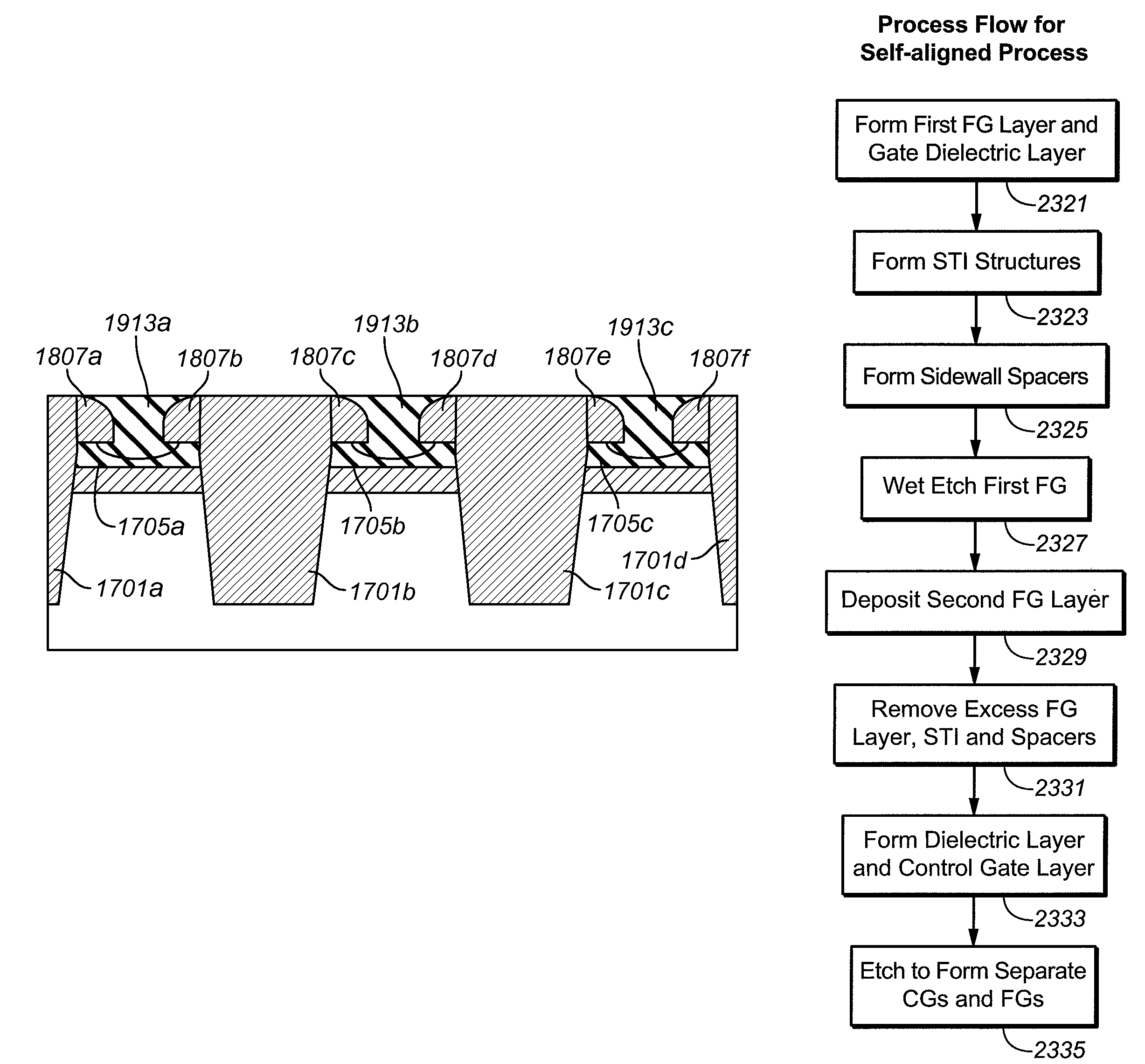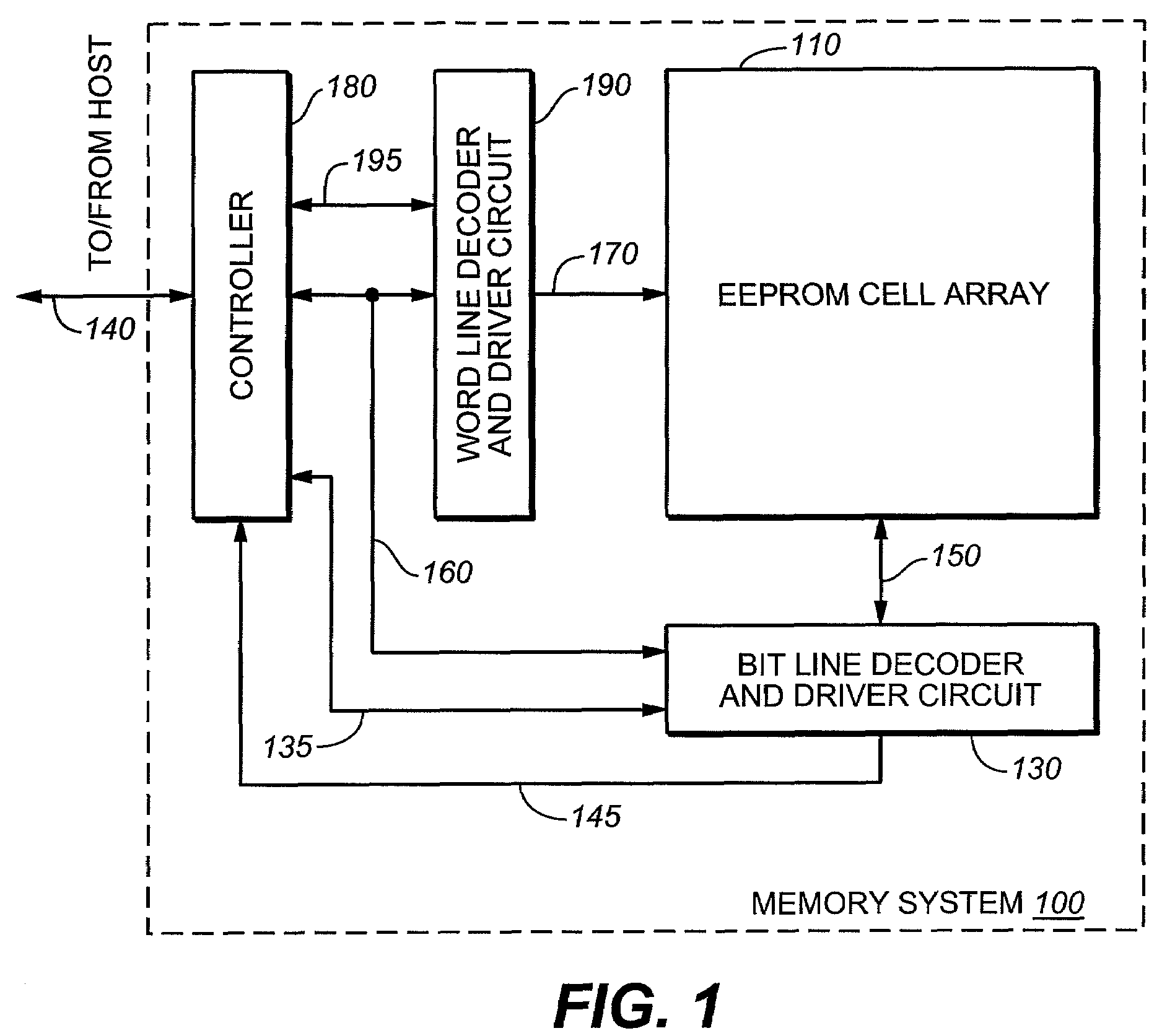Methods of reducing coupling between floating gates in nonvolatile memory
a nonvolatile memory and floating gate technology, applied in the direction of basic electric elements, electrical equipment, semiconductor devices, etc., can solve the problems of limiting the amount of coupling in the overall layout, the difficulty of performing both of these functions, and the limit of how far a given circuit layout can be shrunk, so as to reduce the coupling
- Summary
- Abstract
- Description
- Claims
- Application Information
AI Technical Summary
Benefits of technology
Problems solved by technology
Method used
Image
Examples
Embodiment Construction
[0047]An example of a memory system 100 incorporating the various aspects of the present invention is generally illustrated in the block diagram of FIG. 1. A large number of individually addressable memory cells are arranged in a regular array 110 of rows and columns, although other physical arrangements of cells are certainly possible. Bit lines, designated herein to extend along columns of the array 110 of cells, are electrically connected with a bit line decoder and driver circuit 130 through lines 150. Word lines, which are designated in this description to extend along rows of the array 110 of cells, are electrically connected through lines 170 to a word line decoder and driver circuit 190. Each of the decoders 130 and 190 receives memory cell addresses over a bus 160 from a memory controller 180. The decoder and driving circuits are also connected to the controller 180 over respective control and status signal lines 135 and 195.
[0048]The controller 180 is conne...
PUM
 Login to View More
Login to View More Abstract
Description
Claims
Application Information
 Login to View More
Login to View More - R&D
- Intellectual Property
- Life Sciences
- Materials
- Tech Scout
- Unparalleled Data Quality
- Higher Quality Content
- 60% Fewer Hallucinations
Browse by: Latest US Patents, China's latest patents, Technical Efficacy Thesaurus, Application Domain, Technology Topic, Popular Technical Reports.
© 2025 PatSnap. All rights reserved.Legal|Privacy policy|Modern Slavery Act Transparency Statement|Sitemap|About US| Contact US: help@patsnap.com



